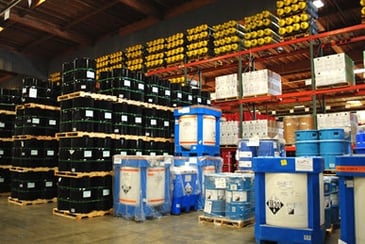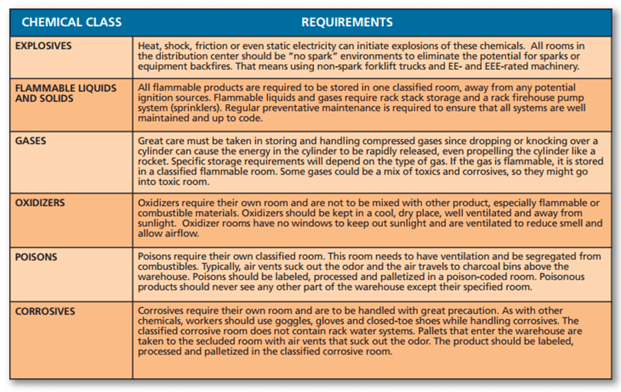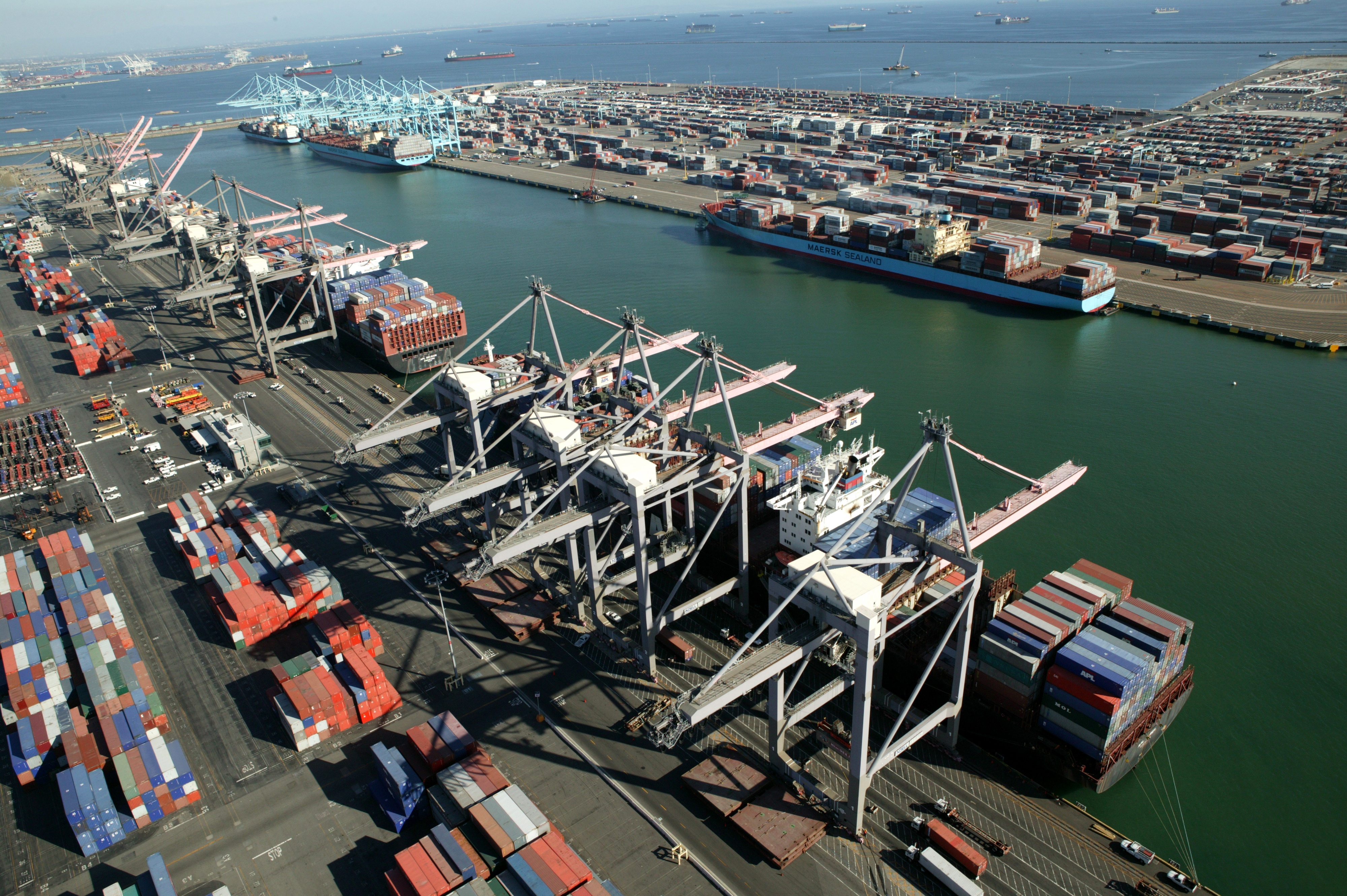Several types of chemicals occupying the same storage facility. Sounds dangerous, right? It doesn’t need to be.

Each class of hazardous chemical has its own specific requirements. If each of these is met to a T, then it follows that a warehouse or storage facility can house additional classes of chemicals without incident – provided that their own specific requirements are met and that cross-contact and can be prevented.
Hazmat Chemical Storage Requirements
Each chemical class is like an industry unto itself, with specific rules and regulations for safe storage and handling. The chart below displays just a few examples:

Within each class, each specific chemical also has its own requirements. OSHA’s Hazard Communication Standard (HCS) requires chemical manufacturers and importers to prepare labels and Safety Data Sheets (SDS) to “convey the hazard information to their downstream customers.” The HCS also requires workplaces to share these labels and SDSs with workers, and to provide proper training in relation to each chemical.
Whether its storing one chemical class or several, a chemical warehousing facility's primary responsibility is conforming to the specific requirements of each chemical independently.
Preventing Cross Contact
Several of the requirements specific to a given chemical or chemical class have to do with other chemicals – preventing them from coming into contact with one another.
For example, if an oxidizer is exposed to a flammable solvent, a fire can occur. Likewise, an acid that encounters metal dust can create hydrogen gas.
Because of this volatility, chemical classes must be stored independently of one another in clearly marked areas. These areas must be separated by approved non-combustible partitions and/or by a distance of twenty feet or greater.
Such separation requirements are sometimes necessary for chemicals within the same chemical class. Examples of this include nitric and perchloric acids, which must be kept separate from organic acids like acetic acid.
Additionally, chemicals can belong to more than one chemical class. For example – according to the University of California, Berkeley’s Office of Environment, Health, and Safety – “acetic acid is both a corrosive acid and a combustible liquid. It must be stored away from corrosive bases, such as sodium hydroxide, and also from oxidizing acids, such as nitric acid.”
A facility that handles more than one hazardous chemical not only must meet the requirements of each independent chemical/chemical class, but must fully understand the relationships between all stored chemicals and classes. Appropriate steps must then be taken to prevent cross contact at all times. As shown above, this includes the potentially-hazardous relationships between chemicals within the same class.
Additional Consideration: CFATS Compliance
In this day and age, there are also external factors that make hazmat chemical storage more dangerous. Facilities that store hazmat chemicals could be targeted for various types of terrorism. And, the more chemicals a facility stores, the greater the potential threat.
To combat this, the Department of Homeland Security’s (DHS) Chemical Facility Anti-Terrorism Standards (CFATS) identifies and secures chemical facilities that constitute the greatest security risk. Chemical storage facilities that are CFATS-compliant adhere to a set of risk-based performance standards (RBPS) to ensure the safety of their operation.
While any chemical storage facility has great responsibility in terms of safety, a facility that stores several types of chemicals must be especially vigilant in protecting its facility from external dangers.
Turn to 3PLs for Hazmat Chemical Storage
The storage of multiple types of hazardous chemicals is a daunting proposition, but there are third-party logistics (3PL) companies who specialize in this potentially-dangerous business. Such 3PLs can store each chemical in its optimal conditions, ensure separation of chemicals at all times, and remain vigilant with regulatory compliance efforts.
The hazmat chemical capabilities of many of these 3PLs also extend beyond compliance and include inventory visibility, transportation, pick and pack, cross docking, and manufacturer support.
Weber is proud to be one of these 3PL chemical experts, and has been since 1970. To learn more about Weber’s logistics capabilities for your chemical operation, contact us today.





 Capital Management
Capital Management